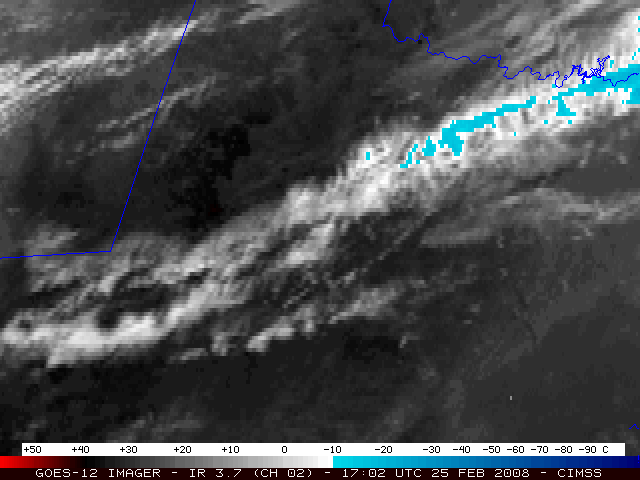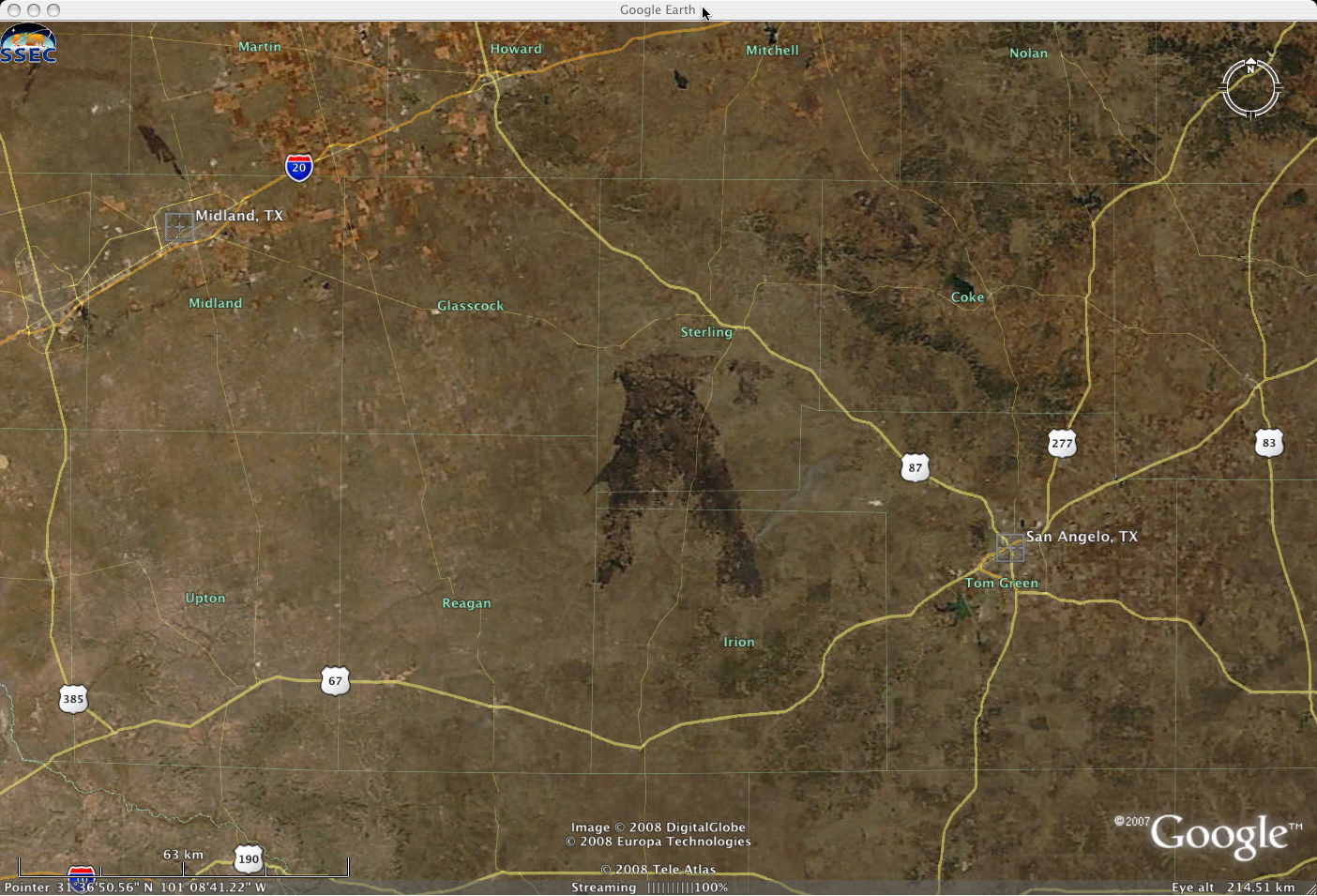Wildfires in Texas
Several large wildfires began to burn across parts of western Texas (and also southeastern New Mexico) late in the day on 25 February 2008, as seen by the large number of fire “hot spots” (black to red pixels, with red being the hottest temperatures) on GOES-12 3.9 µm “shortwave IR” images (above). Strong northerly winds — gusting as high as 67 mph (30 m s-1) at Guadalupe Pass, 51 mph (23 m s-1) at Midland, and 45 mph (20 m s-1) at San Angelo — helped the grass fires quickly grow out of control and spread rapidly southward; this extreme fire growth was evident by the fast rate of increase in areal coverage of “hot” black-to-red pixels on the shortwave IR imagery. Very warm surface air temperatures were also noted across Texas on that day, with a high of 93º F (34º C) at San Angelo and a high of 99ºF (37º C) at Del Rio (which tied the all-time record high for the month of February at that location).
A comparison of the 1-km resolution MODIS 3.7 µm IR image with the corresponding 4-km resolution GOES-12 3.9 µm IR image (above) as the fire intensity and coverage was beginning to diminish around 05:00 UTC or Midnight local time (near the end of the GOES-12 shortwave IR animation shown at the beginning of this post) demonstrates the superior fire detection capability offered by the improvement in spatial resolution on the MODIS instrument. The largest of the active fires was located to the west/northwest of San Angelo (station identifier KSJT), and hot pixels associated with this large fire (black to red enhancement) could be seen across parts of several different counties.
An extensive burn scar resulting from the largest fire (the “Glass Fire”, which was located between San Angelo and Midland) was apparent on MODIS true color imagery (viewed using Google Earth, above) two days later (on 27 February 2008). In fact, one small fire was still burning along the southeastern periphery of the burn scar, with a subtle smoke plume seen drifting northeastward toward Highway 87. The Glass Fire burned over 219,000 acres in Sterling county alone (InciWeb).



